The other day, I received a strange error – No Audio Output Device is Installed on my new HP laptop recently. I saw it when I hovered my cursor over the sound icon. After a bit of research, I realized that for me it was due to the recent Windows 11/10 Update – however, there are many other reasons as well. However, this could happen due to issues with sound drivers, legacy hardware, or your sound card.
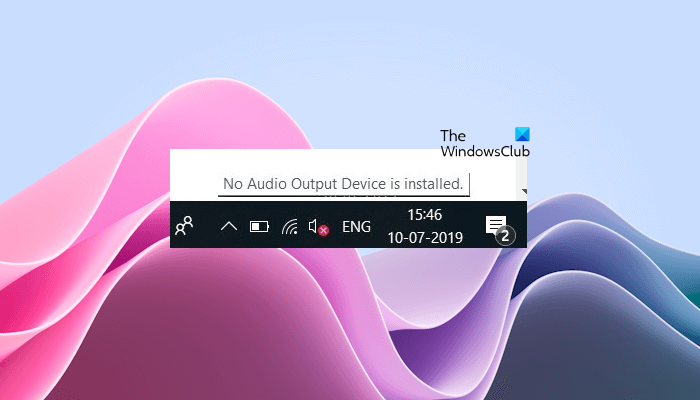
So, basically, after trying almost 8-10 different fixes mentioned all over the web, I finally got rid of this error and got the audio back on my laptop. Such a relief!
No Audio Output Device is Installed
I don’t want you to go through all these troubles, so I am listing all the possible fixes for this error, here in this post. See what works for you. You might be lucky to get the issue resolved by the first fix, or you might need to try all of them one by one. These are the fixes I tried to fix the No Audio Output Device error on my Windows PC:
- Run the Audio Troubleshooter
- Uninstall and reinstall the audio device driver
- Update the Audio driver
- Contact Support for your PC
- Update Intel Smart Sound Technology Audio Control driver (if applicable)
- Check if your Audio device is enabled
- Install another compatible version of the audio driver
Let’s discuss them in detail. Please go through the entire post first, before you decide which fix to start with.
1] Run Windows Audio Troubleshooter
The first step I tried was running the Audio Troubleshooter. Audio Troubleshooter is an automated tool in Windows 11/10 that helps fix audio-related issues. That’s why I tried running this troubleshooter.
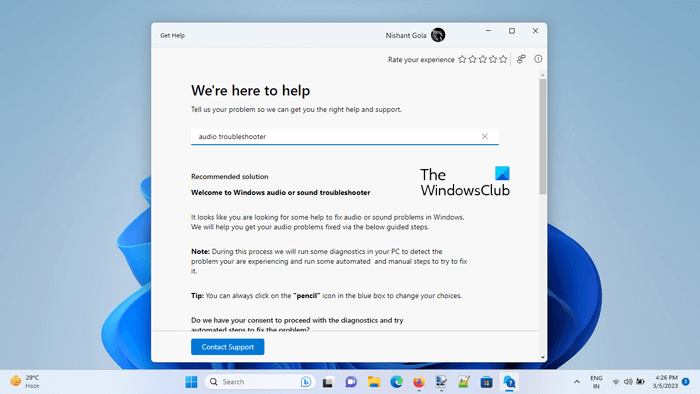
I have shared the steps to run Audio Troubleshooter for both Windows 11 and Windows 10 users.
Windows 11
Open Windows 11 Settings, and navigate to System > Troubleshoot > Other troubleshooters > Audio. Windows 11 users can also run the Audio Troubleshooter via the Get Help app.
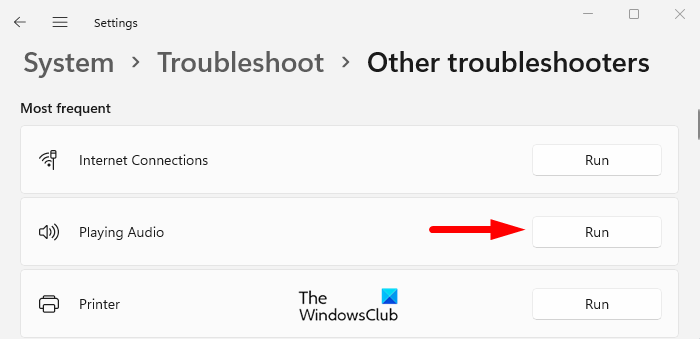
Windows 10
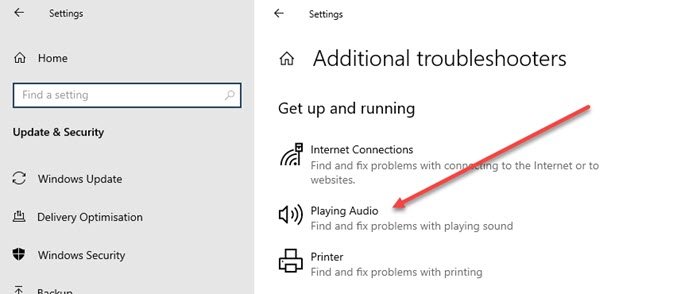
To Run the Windows Audio Troubleshooter in Windows 10:
- Type Troubleshoot in the search box, and it will open the Settings.
- Go to Playing Audio and click on Run Troubleshooter.
- Follow the given instructions, and normally the Troubleshooter solves the issue, but in my case, it didn’t.
2] Uninstall and reinstall the audio device driver
After trying everything mentioned above, I noticed the exclamation mark in my Device Manager. I was wondering how I didn’t notice them before. In my Device Manager, there were two devices mentioned under the tab Intel and after a bit of research, I understood that these devices got installed on my PC with the latest Windows Update and uninstalling them would bring the audio back in my laptop. I did that, I uninstalled the device drivers for the two devices mentioned there with the exclamation mark, and VOILA, the audio came back.
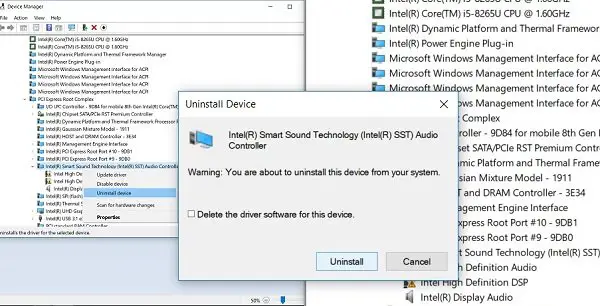
Unfortunately while shutting down the laptop it again received the Update automatically and the error ‘No Audio Output Device is Installed’ was back and there was again a red cross over my laptop speaker. I did not want to hide the Update so I tried other steps.
3] Update the Audio Driver
One possible cause of this error is the corrupted audio driver. Updating the driver can fix this error. To update the audio driver to the latest version, download its latest version from the official website of the computer manufacturer.

After visiting the official website of your computer manufacturer, enter your computer model number or serial number to download the right compatible driver. Now, search for the audio driver and download its latest version. Run the installer file to install it manually.
4] Contact Support for your PC
Next, what I did was to contact the HP Support team for Driver Support and see if they have some quick solution. This is where I came to know that the audio issue is due to the Windows Update KB4462919. 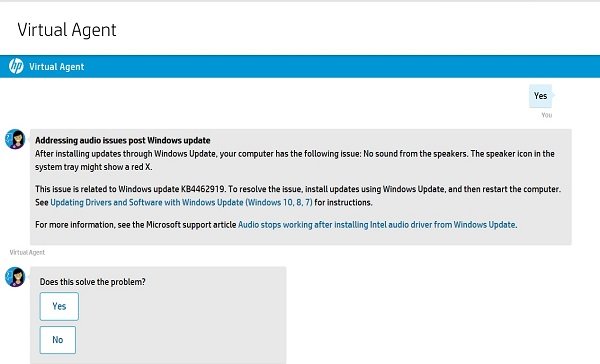
The virtual agent told me it was because of the recent update and asked me to install the updates from a given link. I tried it, but unfortunately, it didn’t work either.
Similarly, depending on the make of your laptop, you may contact support for your Acer, HP, ASUS, Lenovo, Dell, Samsung, etc.
Read: Realtek audio driver crashing randomly
5] Update Intel Smart Sound Technology Audio Control driver (if applicable)
Finally, after trying all this, I got the solution to the error, and it was fixed. My laptop got the audio back. I downloaded the latest version of this driver and installed it manually. VOILA, the error was fixed, and I got the audio back on my laptop. It didn’t even ask for a restart, and the error was fixed.
Now there were no exclamation marks anymore in my Device Manager and no red cross over my laptop speaker icon.
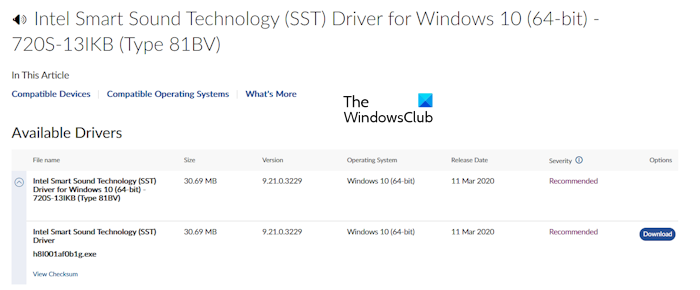
Depending on your laptop brand, you can download this driver from the official website of your laptop manufacturer. To find out whether this driver is present on your system, open the Device Manager and expand the System Devices branch. Then, look for the Intel Smart Sound Technology Audio Control driver there.
6] Check if your Audio device is enabled
You should also check if your audio device is enabled. The following instructions will guide you on this:
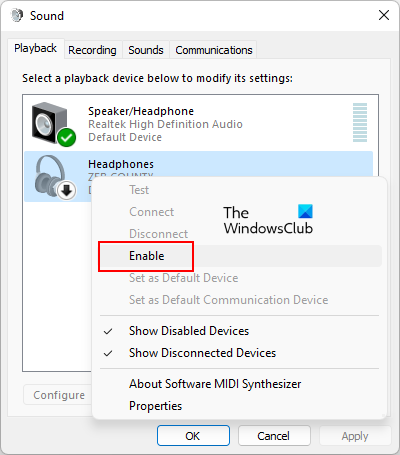
- Open the Control Panel.
- Go to Hardware and Sound > Sound.
- When the Sound dialog box opens, right-click on your Audio device and select Enable.
- Click Apply and then click OK.
7] Install another compatible version of the audio driver
You can also try installing another compatible version of your audio device driver to see if it helps. Before you proceed, we recommend you create a System Restore Point. Go through the following instructions:
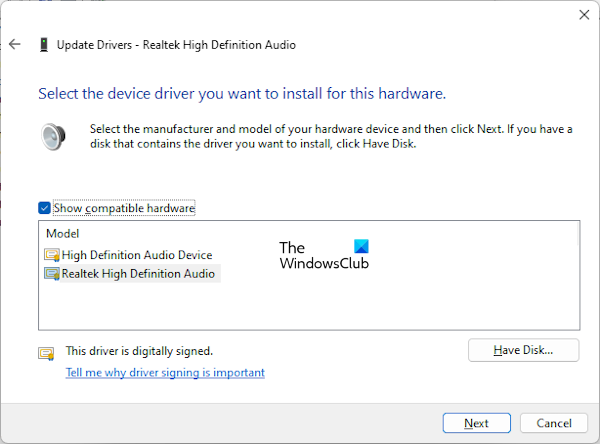
- Open the Device Manager.
- Expand the Sound, video and game controllers branch.
- Select Update driver.
- Select Browse my computer for drivers.
- Now, select the Let me pick from a list of available drivers on my computer option.
- Make sure that the Show compatible hardware checkbox is selected.
- Select another available version of the audio driver and click Next. Follow the on-screen instructions to install the audio driver.
This is how I fixed the “No Audio Output Device is Installed” error on my Windows PC.
Why am I getting no audio output?
You are not getting an audio output on your computer for various reasons. The issue may be associated with your audio device driver. Also, your audio device may be disabled, or you may have selected another audio device as the default device on your system. Check this in Sound settings. Your audio device may be faulty. You can check this by connecting it to another device.
How do I enable my audio output device?
If your audio device is disabled, you can enable it in Sound settings. To do so, open the Control Panel and go to Hardware and Sound > Sound. Now, select the Playback tab. Right-click on your audio device and select Enable. Also, make sure that the device is set as the default device on your system; otherwise, you will not get any sound output from that audio device despite enabling it.
Read next: Install Realtek HD Audio Driver Failure, Error 0x00005b3.
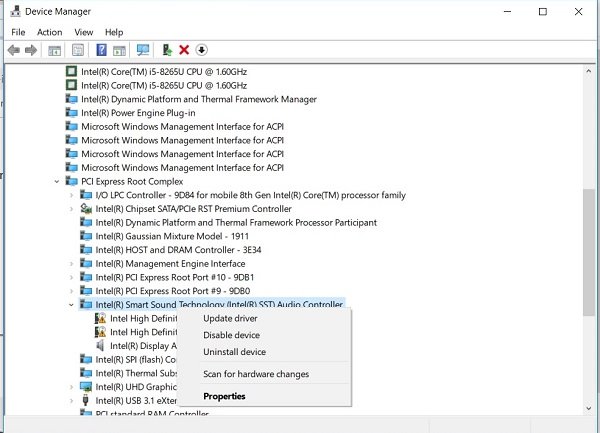
Leave a Reply